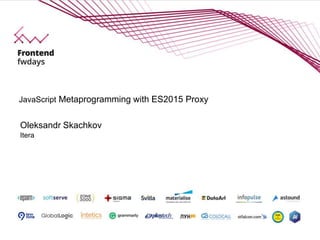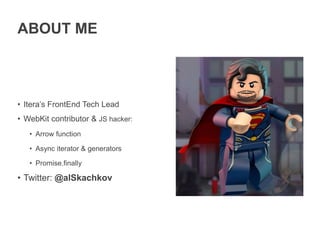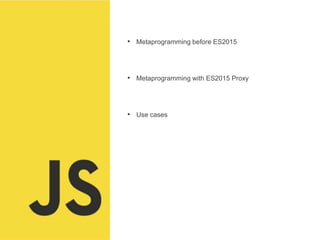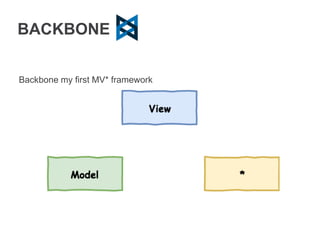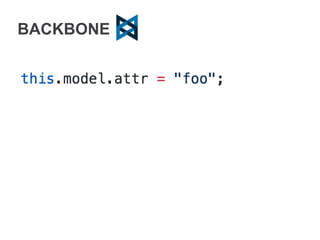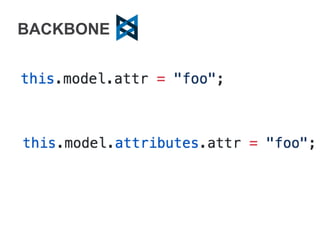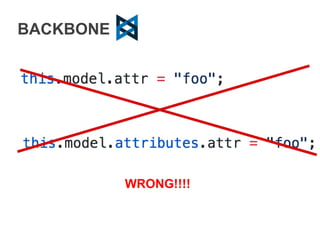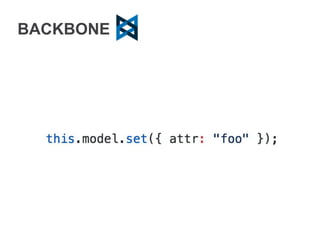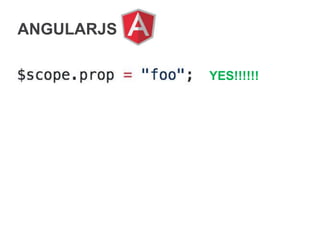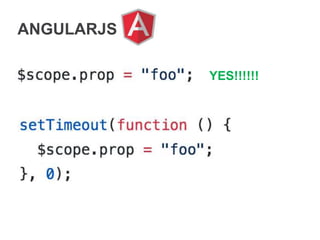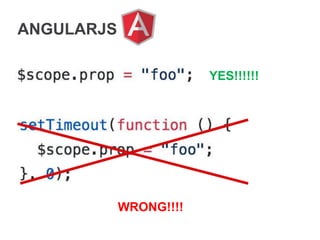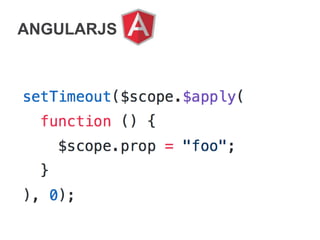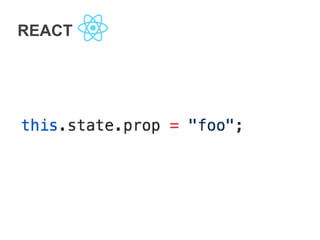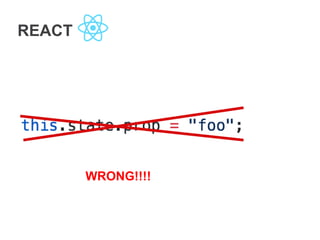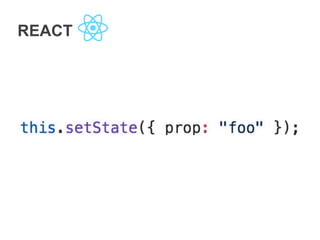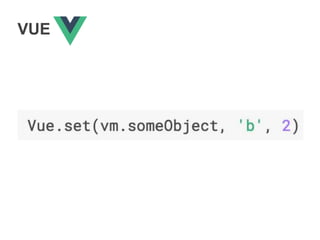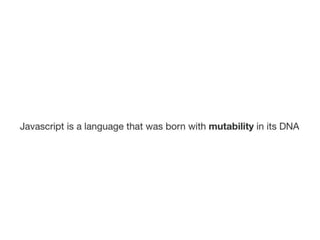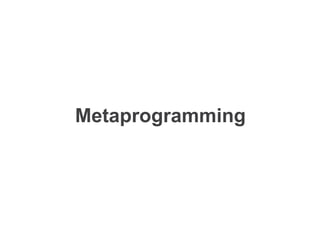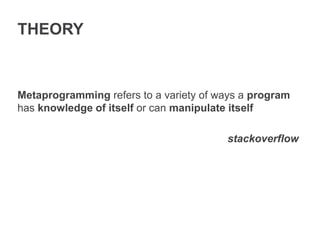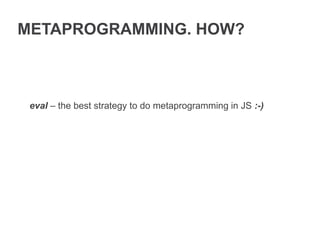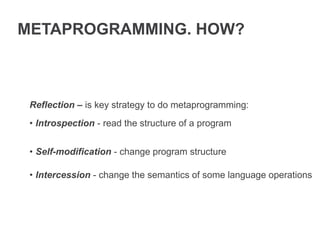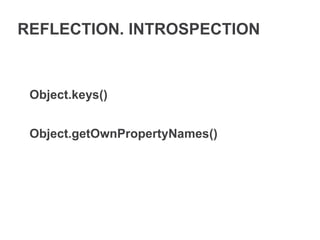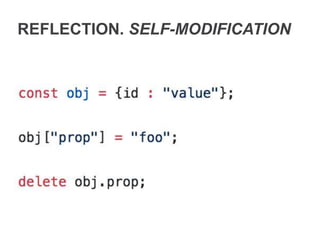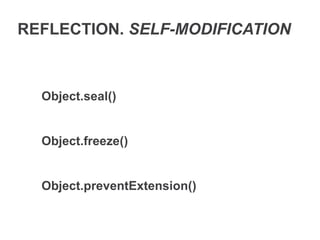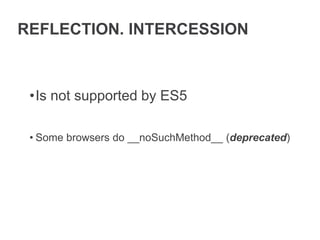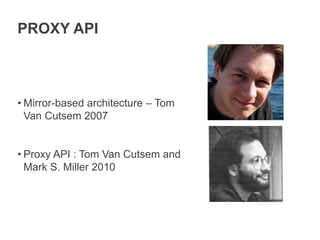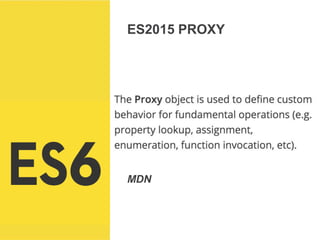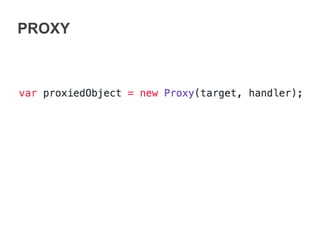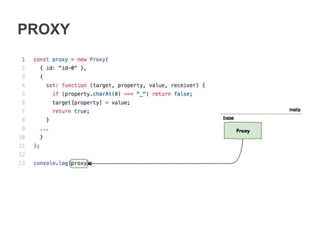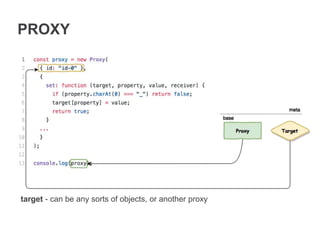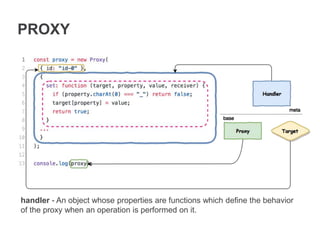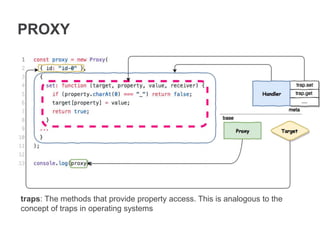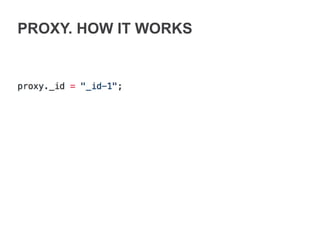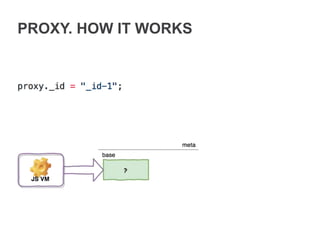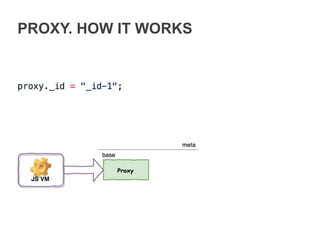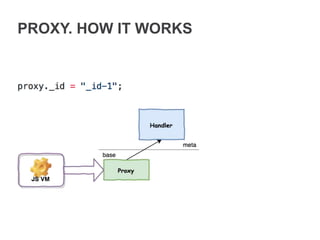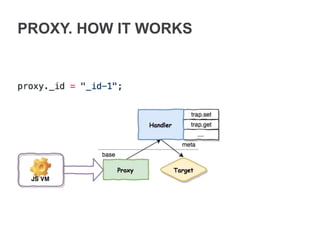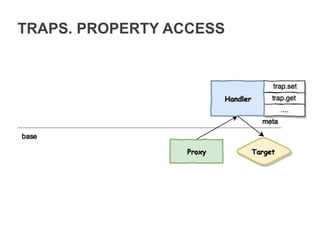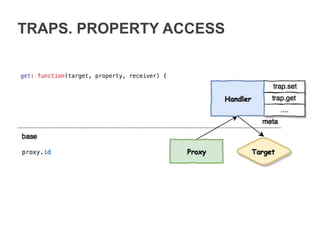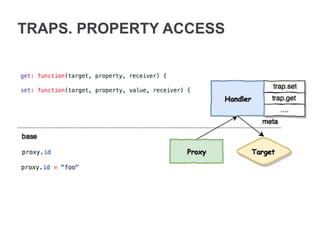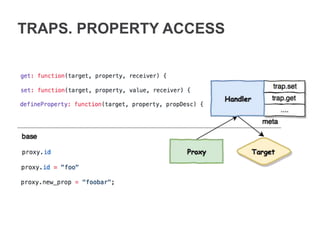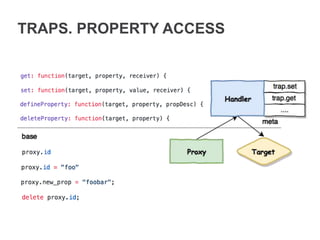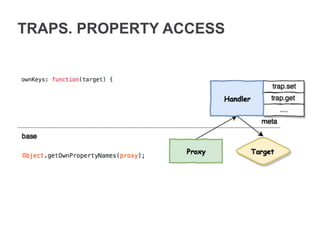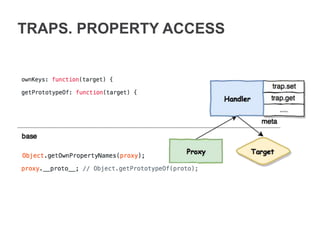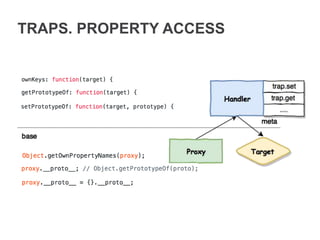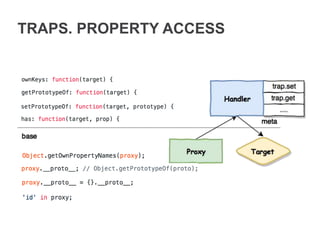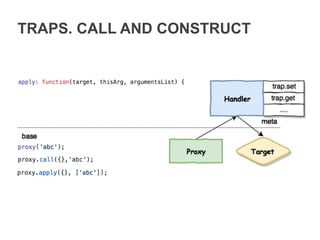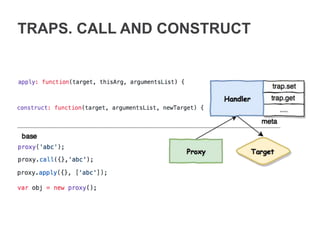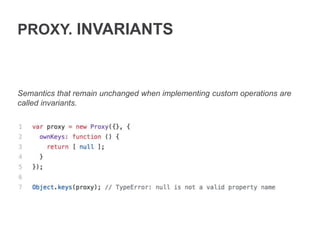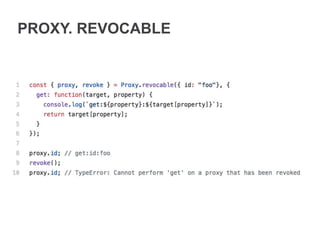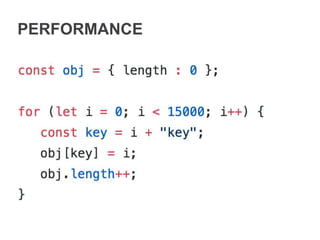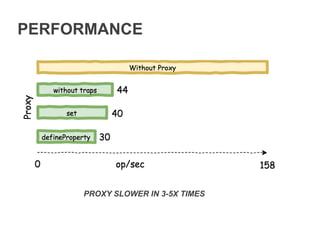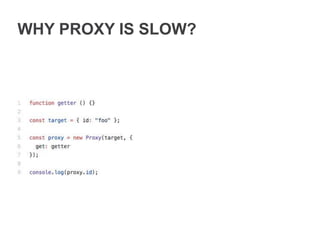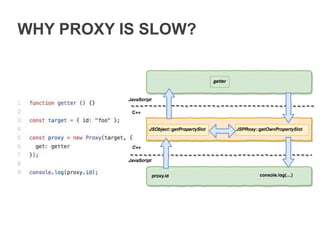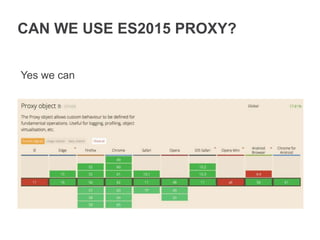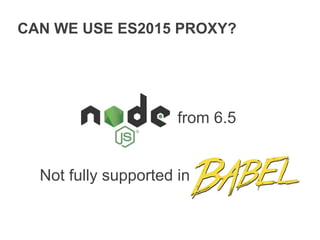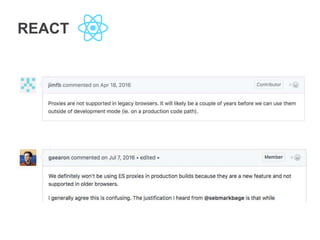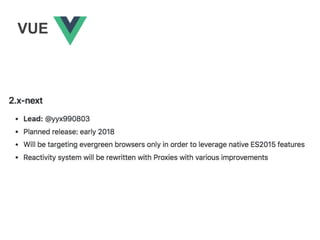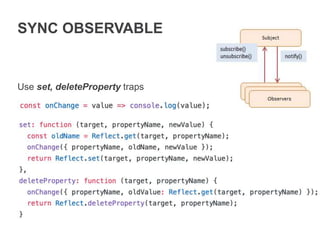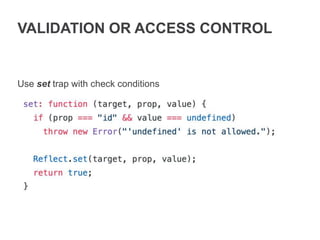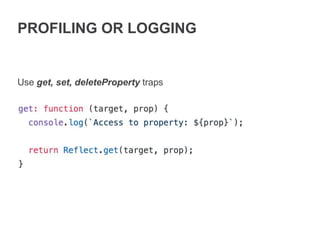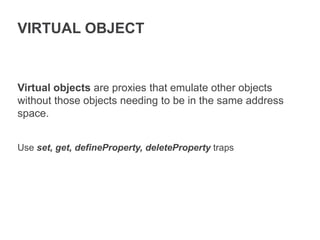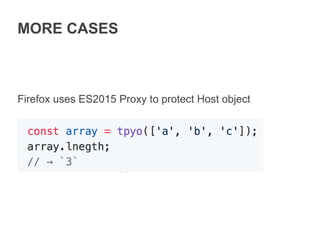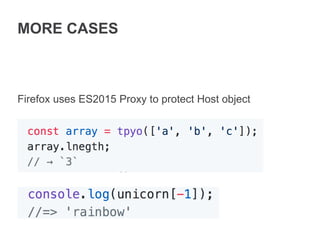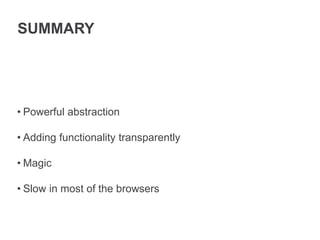JavaScript Metaprogramming with ES 2015 Proxy
- 1. Oleksandr Skachkov Itera JavaScript Metaprogramming with ES2015 Proxy
- 2. ABOUT ME ŌĆó IteraŌĆÖs FrontEnd Tech Lead ŌĆó WebKit contributor & JS hacker: ŌĆó Arrow function ŌĆó Async iterator & generators ŌĆó Promise.finally ŌĆó Twitter: @alSkachkov
- 3. ES2015 PROXY JAVASCRIPT METAPROGRAMMING WITH ŌĆó Metaprogramming before ES2015 ŌĆó Metaprogramming with ES2015 Proxy ŌĆó Use cases
- 4. BACKBONE Backbone my first MV* framework
- 5. BACKBONE
- 6. BACKBONE
- 8. BACKBONE
- 9. OK?
- 13. ANGULARJS
- 14. REACT
- 15. REACT WRONG!!!!
- 16. REACT
- 17. VUE
- 18. WHY?
- 20. Metaprogramming
- 21. THEORY Metaprogramming refers to a variety of ways a program has knowledge of itself or can manipulate itself stackoverflow
- 22. METAPROGRAMMING. HOW? eval ŌĆō the best strategy to do metaprogramming in JS :-)
- 23. METAPROGRAMMING. HOW? Reflection ŌĆō is key strategy to do metaprogramming: ŌĆó Introspection - read the structure of a program ŌĆó Self-modification - change program structure ŌĆó Intercession - change the semantics of some language operations
- 27. REFLECTION. INTERCESSION ŌĆóIs not supported by ES5 ŌĆó Some browsers do __noSuchMethod__ (deprecated)
- 28. PROXY API ŌĆó Mirror-based architecture ŌĆō Tom Van Cutsem 2007 ŌĆó Proxy API : Tom Van Cutsem and Mark S. Miller 2010
- 29. MDN ES2015 PROXY
- 30. PROXY
- 31. PROXY
- 32. PROXY target - can be any sorts of objects, or another proxy
- 33. PROXY handler - An object whose properties are functions which define the behavior of the proxy when an operation is performed on it.
- 35. PROXY traps: The methods that provide property access. This is analogous to the concept of traps in operating systems
- 36. PROXY. HOW IT WORKS
- 37. PROXY. HOW IT WORKS
- 38. PROXY. HOW IT WORKS
- 39. PROXY. HOW IT WORKS
- 40. PROXY. HOW IT WORKS
- 50. TRAPS. CALL AND CONSTRUCT
- 51. TRAPS. CALL AND CONSTRUCT
- 52. PROXY. INVARIANTS Semantics that remain unchanged when implementing custom operations are called invariants.
- 53. PROXY. REVOCABLE
- 54. PERFORMANCE
- 55. PERFORMANCE PROXY SLOWER IN 3-5X TIMES
- 56. WHY PROXY IS SLOW?
- 57. WHY PROXY IS SLOW?
- 58. CAN WE USE ES2015 PROXY? Yes we can
- 59. CAN WE USE ES2015 PROXY? from 6.5 Not fully supported in
- 60. REACT
- 61. VUE
- 62. USAGE SCENARIOS
- 63. SYNC OBSERVABLE Use set, deleteProperty traps
- 64. VALIDATION OR ACCESS CONTROL Use set trap with check conditions
- 65. PROFILING OR LOGGING Use get, set, deleteProperty traps
- 66. VIRTUAL OBJECT Virtual objects are proxies that emulate other objects without those objects needing to be in the same address space. Use set, get, defineProperty, deleteProperty traps
- 67. MORE CASES Firefox uses ES2015 Proxy to protect Host object
- 68. MORE CASES Firefox uses ES2015 Proxy to protect Host object
- 69. SUMMARY ŌĆó Powerful abstraction ŌĆó Adding functionality transparently ŌĆó Magic ŌĆó Slow in most of the browsers
- 70. QUESTIONS?
Editor's Notes
- #27: The┬ĀObject.seal()┬Āmethod seals an object, preventing new properties from being added to it and marking all existing properties as non-configurable The┬ĀObject.freeze()┬Āmethod freezes an object: that is, prevents new properties from being added to it; prevents existing properties from being removed; and prevents existing properties, or their enumerability, configurability, or writability, from being changed, it also prevents the prototype from being changed.┬Ā The┬ĀObject.preventExtensions()┬Āmethod prevents new properties from ever being added to an object (i.e. prevents future extensions to the object).
- #53: invariants
- #54: invariants

